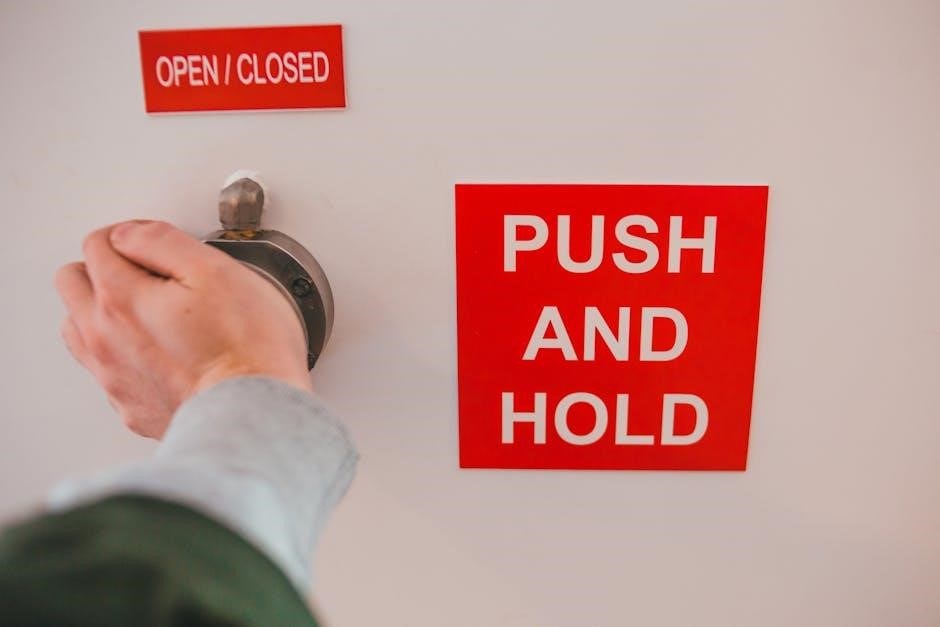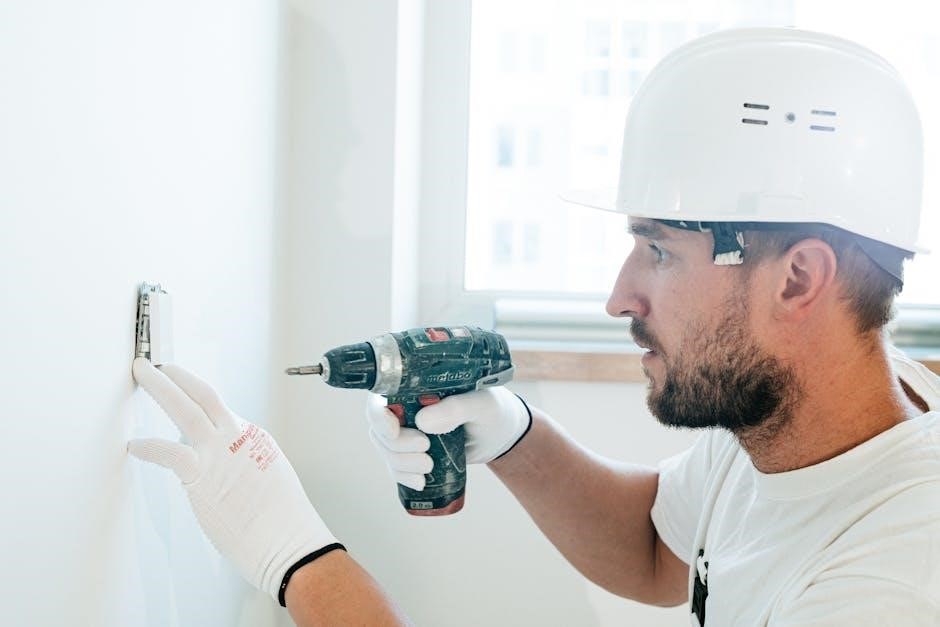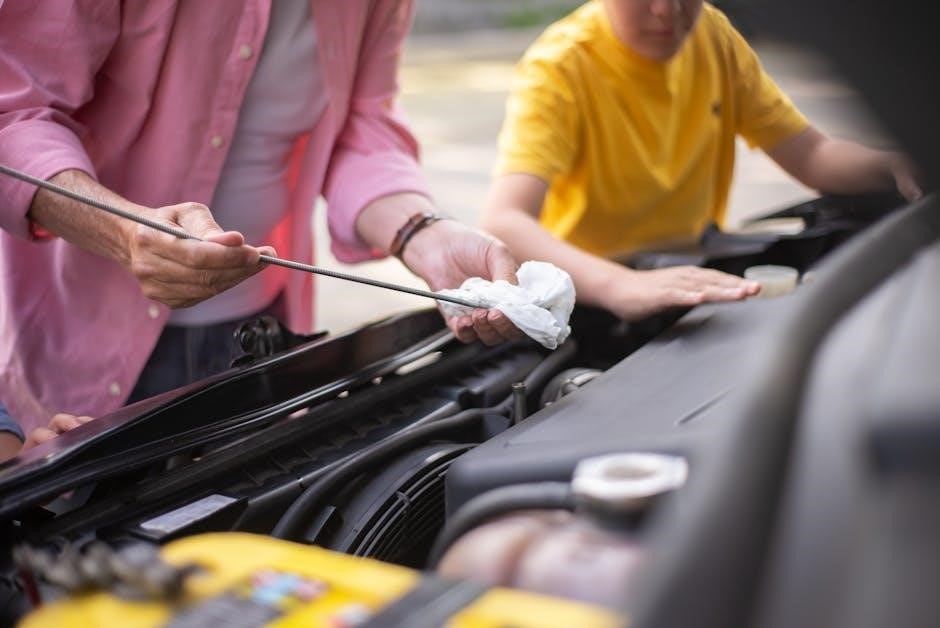Uniden DECT 6.0 Operating Instructions: A Comprehensive Guide

Uniden’s DECT 6.0 phones offer reliable communication, and this guide details setup, operation, and troubleshooting for optimal performance.
Explore advanced features and software compatibility.

Uniden DECT 6.0 phones represent a significant advancement in cordless telephone technology, offering enhanced clarity, security, and range compared to older 900 MHz or 2.4 GHz models. This series is designed for users seeking dependable home communication, prioritizing features like exceptional voice quality and interference-free operation.
These phones utilize the Digital Enhanced Cordless Telecommunications (DECT) 6.0 standard, ensuring secure conversations and minimizing eavesdropping risks. Uniden provides a variety of DECT 6.0 models, catering to diverse needs – from basic single-handset systems to more complex multi-handset configurations with advanced functionalities. Understanding the core features and setup procedures will unlock the full potential of your Uniden DECT 6.0 phone system, providing years of reliable service.
Understanding DECT 6.0 Technology
DECT 6.0 (Digital Enhanced Cordless Telecommunications) is a globally recognized standard for cordless phones, renowned for its superior performance and security. Unlike older technologies, DECT 6.0 operates on a dedicated frequency band – 1.92 to 1.93 GHz – minimizing interference from other wireless devices like Wi-Fi routers and Bluetooth gadgets.
This dedicated spectrum ensures clearer calls and a more stable connection. Furthermore, DECT 6.0 incorporates advanced encryption protocols, safeguarding your conversations from unauthorized access. Uniden leverages this technology to deliver phones with extended range, improved battery life, and enhanced voice quality. Understanding these core principles highlights the benefits of choosing a DECT 6.0 system for your home communication needs.
Setting Up Your Uniden DECT 6.0 Phone System
Proper setup is crucial for optimal performance. This section guides you through unboxing, base station connection, handset charging, and registration procedures for seamless operation.
Initial Unboxing and Component Check
Carefully unpack your Uniden DECT 6.0 phone system and verify all components are present. You should find the base station, one or more handsets (depending on the model), a power adapter for the base station, handset batteries, and a charging cradle.
Inspect each item for any physical damage incurred during shipping. Refer to the included quick start guide or full manual to confirm the contents match your specific model. Retain the original packaging for potential returns or warranty claims.
Ensure the power adapter is the correct voltage for your region. Missing components or damage should be reported to the retailer or Uniden support immediately for resolution.
Base Station Setup and Power Connection
Position the Uniden DECT 6.0 base station in a central location, away from metal objects and sources of interference. Ensure it’s near a working electrical outlet. Connect the provided power adapter to the base station and plug it into the outlet.
The base station should power on automatically, indicated by illuminated lights. If it doesn’t, verify the power adapter is securely connected at both ends. Avoid using extension cords or power strips if possible, as they can sometimes degrade the signal.
Allow a few minutes for the base station to initialize before attempting to register handsets. Refer to the manual for specific light patterns indicating operational status.
Handset Charging and Battery Installation
Before initial use, install the battery pack into the Uniden DECT 6.0 handset. Locate the battery compartment, usually on the back, and insert the battery, aligning the contacts correctly. Secure the compartment cover.
Place the handset in the base station’s charging cradle to begin charging. A charging indicator light will illuminate, showing the battery status. Allow the handset to charge fully – typically several hours – before extended use.
A fully charged battery provides several hours of talk time and standby time. Avoid exposing the handset or battery to extreme temperatures or moisture.
Registering Handsets to the Base Station
To add a new handset to your Uniden DECT 6.0 system, initiate the registration process. Typically, this involves pressing a “Find Handset” or “Add Handset” button on the base station. The base station will then begin searching for available handsets.
On the handset, enter the base station’s security code if prompted. This code is usually found on the base station itself or in the user manual. Follow the on-screen instructions to complete the registration.
Once registered, the handset will display a confirmation message. You can register multiple handsets to a single base station, depending on the system’s capacity.
Basic Operation of Your Uniden DECT 6.0 Handset
Master essential functions like making and receiving calls, adjusting volume, utilizing the speakerphone, and navigating the intuitive handset menu for seamless communication.
Making and Receiving Calls

To initiate a call, simply enter the desired number using the keypad and press the “Talk” or “Send” button. The handset will display the call progress, and you’ll hear a dial tone. When the call connects, speak clearly into the microphone.
An incoming call is announced by a ringer, and the caller ID (if subscribed to the service) will be displayed on the handset screen. Press the “Talk” or “Send” button to answer the call. During a call, you can use the “Mute” button to temporarily silence your microphone.
To end a call, press the “End” or “Redial” button. The handset will return to standby mode, ready for the next call. Remember to check your service provider for any call-related features or restrictions.
Adjusting Volume and Ringer Settings
Volume control is easily managed during a call using the volume up and down buttons on the handset. These buttons adjust the earpiece volume, ensuring clear audio. For ringer volume adjustments, navigate to the handset’s menu, typically under “Settings” or “Audio.”
Ringer options often include various tones and melodies. You can select your preferred ringer and set the volume level to suit your environment. Some models offer different ringer tones for specific contacts.
To silence the ringer for a single call, press the volume down button. Explore the menu for options like “Do Not Disturb” to temporarily disable all incoming call alerts.
Using the Speakerphone Function
Activating the speakerphone is typically achieved by pressing a dedicated “Speakerphone” button on the handset during a call. This allows for hands-free communication, ideal for multitasking or conference calls. Ensure the handset is placed on a stable surface for optimal audio quality.
Volume adjustment for the speakerphone is usually independent of the earpiece volume. Use the volume up and down buttons while the speakerphone is active to find a comfortable listening level.
To deactivate the speakerphone, press the “Speakerphone” button again or simply lift the handset to your ear. Some models automatically switch to handset mode after a period of inactivity.
Navigating the Handset Menu
Accessing the handset menu is generally done by pressing the “Menu” or “Options” button. Use the directional pad (up, down, left, right) to scroll through the available options, such as call history, phonebook, settings, and system information.
Selecting an option is typically confirmed by pressing the “OK” or “Select” button. To return to the previous menu, press the “Back” or “Cancel” button. Familiarize yourself with the menu structure to efficiently customize your phone.
Menu options may include ringer volume, display brightness, date/time settings, and language preferences. Explore these settings to personalize your Uniden DECT 6.0 experience.
Advanced Features and Functionality
Unlock powerful features like caller ID, call waiting, three-way calling, and a robust phonebook for enhanced communication and streamlined contact management.
Caller ID and Call History
Uniden DECT 6.0 phones boast a comprehensive Caller ID system, displaying the caller’s name and number (if available) on the handset screen before you answer. This feature requires a subscription to Caller ID service from your telephone provider. To access the call history, navigate through the handset’s menu using the directional pad.

The system typically stores a substantial number of incoming, outgoing, and missed calls, allowing you to easily review recent communication activity. You can often scroll through the list, view details, and even redial numbers directly from the call history. Some models may also allow you to add callers directly to your phonebook from the call history screen, streamlining contact management. Regularly clearing the call history can help maintain optimal phone performance.
Phonebook Management and Contacts
Uniden DECT 6.0 phones simplify contact management with a robust phonebook feature. You can store numerous names and numbers directly on the handset or, in some models, synchronize with smartphones via Bluetooth. Adding new contacts is typically done through the handset’s menu, allowing you to input names, numbers, and even assign custom ringtones to specific individuals.
Editing existing contacts is equally straightforward, ensuring your phonebook remains accurate and up-to-date. Many Uniden phones also support caller groups, enabling you to categorize contacts for easier searching and call management. Regularly backing up your phonebook (if the model supports it) is recommended to prevent data loss.
Call Waiting and Call Transfer

Uniden DECT 6.0 phones offer convenient call management features like call waiting and call transfer. When call waiting is activated, you’ll receive an audible tone during an active call, indicating an incoming call. You can then switch between calls or put the current caller on hold.
Call transfer allows you to seamlessly connect an incoming call to another extension within your phone system or even to an external number. Accessing these features usually involves pressing dedicated buttons on the handset during a call. Ensure your service provider supports call waiting for optimal functionality. Proper configuration within the phone’s menu is also essential.
Three-Way Calling

Uniden DECT 6.0 phones often support three-way calling, enabling conversations with two parties simultaneously. To initiate a three-way call, first establish a call with the initial party. Then, activate the call waiting feature, and when the second party calls, answer it.
The system will typically prompt you to merge the calls, creating a conference call. Ensure your service provider supports three-way calling, as it’s a network-dependent feature. Volume adjustments may be necessary to ensure all parties can hear clearly. Consult your phone’s manual for specific button sequences to manage the conference call effectively.
Troubleshooting Common Issues
Resolve typical problems like no dial tone, handset registration failures, and poor audio quality with our guide. Battery concerns are also addressed here.
No Dial Tone Troubleshooting
Experiencing no dial tone? Begin by verifying the base station’s power connection and ensuring it’s securely plugged into a working electrical outlet. Confirm the phone line cord is firmly connected to both the base station and the wall jack. Test the wall jack with a known working phone to rule out a problem with your phone service provider.
If the base station’s indicator lights aren’t illuminated, a power issue is likely. If lights are present, try resetting the base station by disconnecting and reconnecting the power. Ensure the handset is within range of the base station. A weak signal can sometimes mimic a lack of dial tone. Finally, consult the Uniden support website for specific troubleshooting steps related to your model.
Handset Not Registering Solutions
If a handset fails to register with the base station, first ensure both devices are adequately charged. Initiate the registration process again by following the instructions in the “Registering Handsets” section of this guide. Confirm the base station isn’t already at its maximum handset capacity – most models support a limited number of handsets.
Try resetting the handset by removing and reinserting the battery. If problems persist, perform a master reset on both the handset and base station (refer to your model’s specific instructions). Interference from other electronic devices can sometimes disrupt registration; move the base station away from potential sources of interference. Contact Uniden support if these steps don’t resolve the issue.
Poor Audio Quality Resolution
Experiencing muffled or distorted audio? Begin by checking the volume levels on both the handset and base station. Ensure the handset’s speaker isn’t obstructed. If using a headset, verify it’s properly connected and functioning correctly. Interference from other devices can degrade audio quality; relocate the base station away from potential sources like microwaves or cordless phones.
Try resetting the handset to its factory defaults. A weak signal can also cause poor audio; ensure the handset is within range of the base station. If the issue persists, consider replacing the handset battery. Contact Uniden customer support for further assistance if these steps fail to improve audio clarity.
Battery Issues and Replacement
Reduced talk time or a handset that won’t power on often indicates battery problems. Initially, ensure the handset is correctly seated in the charger, and the charger is properly connected to a working power outlet. If charging doesn’t resolve the issue, the battery may need replacing.
Uniden DECT 6.0 handsets typically use Nickel-Metal Hydride (Ni-MH) batteries. Always use a compatible replacement battery with the correct voltage and capacity. Follow Uniden’s instructions for safe battery removal and installation. Dispose of old batteries responsibly, adhering to local regulations. A new battery should restore normal handset operation.
Software and Programming (Sentinel/ARC-260 Compatibility)
Uniden provides Sentinel software for programming, but alternatives like ARC-260 exist, offering expanded functionality and frequency database access for enhanced scanner control.
Installing and Using Uniden Sentinel Software
The Uniden Sentinel software, downloadable from the official Uniden website, facilitates programming and managing your scanner. Installation requires administrative privileges and may necessitate the installation of the .NET Framework 2.0 on Windows 11 systems, addressing potential dependency issues.
Upon launching Sentinel, connect your scanner via USB. The software should automatically detect the device. You can then download and import frequency databases, create channel lists, and customize scanner settings. While functional, users note Sentinel’s limitations, prompting some to explore alternative programming solutions like ARC-260 for more advanced control and database options. Regularly check for software updates to ensure optimal performance and compatibility.

Alternative Programming Software (ARC-260)
ARC-260 presents a robust alternative to Uniden’s Sentinel software for programming your scanner. Experienced users, particularly those familiar with older programming tools like BuTel, often prefer ARC-260’s expanded capabilities and customization options. It allows for efficient frequency downloading utilizing a RadioReference membership, streamlining the process of populating your scanner with desired channels.
ARC-260 offers a more comprehensive interface for managing complex channel setups and advanced scanner configurations. While requiring a learning curve for new users, its power and flexibility make it a popular choice among dedicated scanner enthusiasts seeking greater control over their device’s programming.
Downloading Frequencies and Database Updates
Maintaining current frequencies and databases is crucial for optimal scanner performance. Utilizing a RadioReference membership alongside programming software like ARC-260 simplifies this process significantly. Users can directly download updated frequency lists tailored to their specific geographic location and desired services.
Regular database updates ensure your scanner accurately receives and decodes signals, especially as frequencies change or new services are introduced. This proactive approach maximizes the scanner’s effectiveness for monitoring various communications, from public safety to motorsports. Consistent updates are key to a reliable scanning experience.
.NET Framework Dependency Issues (Windows 11)
Users migrating to Windows 11 may encounter issues installing Uniden Sentinel software due to .NET Framework dependencies. The software often requires the older .NET 2.0 framework, which isn’t automatically included in newer Windows versions. Installation will fail until this dependency is manually addressed.
A quick check reveals current .NET releases are significantly higher (version 7 or later). To resolve this, download and install the Microsoft .NET Framework 2.0 Redistributable Package from the official Microsoft website. This ensures compatibility and allows Sentinel to install and function correctly, providing seamless scanner programming.
GPS Functionality (SDS100/SDS150 Models)
Uniden SDS models leverage GPS for location-based scanning, enhancing monitoring capabilities. Regularly updating GPS databases optimizes performance and ensures accurate location identification.
Utilizing GPS for Location-Based Scanning
The Uniden SDS100 and SDS150 scanners utilize integrated GPS functionality to significantly enhance the scanning experience. This allows users to define geographical areas and prioritize signals originating from within those zones. As noted in recent guides (August 28, 2025), the GPS feature works exceptionally well, even during extensive travel across multiple regions – including the US, Canada, and Mexico.
By leveraging GPS, the scanner can automatically adjust its search parameters, focusing on relevant frequencies based on your current location. This is particularly useful for monitoring local public safety, emergency services, or specific events. The system effectively eliminates the need for extensive manual frequency programming and favorites lists, streamlining the scanning process for optimal performance.
Updating GPS Databases
Maintaining current GPS databases is crucial for the accuracy and effectiveness of location-based scanning on Uniden SDS100/150 models. Outdated databases can lead to inaccurate location information and reduced scanning performance. Regularly updating ensures the scanner correctly identifies your position and prioritizes relevant frequencies.
While specific update procedures vary, users should consult the Uniden support resources and online forums for the latest instructions. The GPS functionality, as highlighted in a 2025 guide, relies on these databases for optimal operation. Keeping the GPS databases current is a simple step that significantly improves the overall scanning experience, especially when traveling or monitoring diverse geographical areas.

Optimizing GPS Performance
Maximizing GPS performance on Uniden SDS100/150 scanners involves several key considerations. Ensuring a clear view of the sky is paramount, as obstructions can weaken the GPS signal. A 2025 user report detailed successful operation with a scanner and GPS module mounted on a vehicle’s mirror, demonstrating practical application.

Additionally, regularly updating GPS databases, as previously discussed, is vital. Experiment with antenna placement to find the optimal reception point. Some users report improved performance with external antennas. Finally, be aware that environmental factors and atmospheric conditions can occasionally impact GPS accuracy, requiring patience and strategic positioning.








































